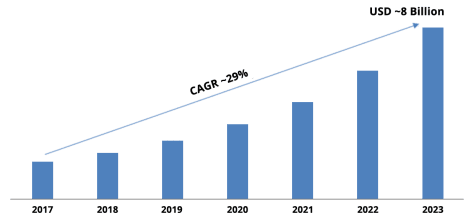Tytus Kurek
on 3 March 2022
OpenStack is dead? The numbers speak for themselves.
Austin, Texas – 3rd of March 2022 – OpenStack is dead! A masked man in a black cloak with “public clouds”, “containers” and ”serverless” inscriptions shot OpenStack straight in the heart. OpenStack fell to the ground and with the last moment of strength exclaimed: “Long live open infrastructure”!
That could be a headline of a tabloid, would you agree?
OpenStack is dead. We’ve all heard about that. It’s gone. It’s abandoned. It’s been dominated by public clouds. The world does no longer need OpenStack. The world only needs containers, serverless or the next cutting-edge technology (whatever it’s going to be). The world doesn’t like OpenStack anymore. OpenStack is an obsolete technology. It is antiquated, passe and definitely no longer sexy.
What is the problem then? Well, the problem is that none of these things is real.
OpenStack in numbers
Before we move any further, let’s step back for a while and consider objective and independent statistics around OpenStack.
The most popular open-source cloud platform
According to Statista, OpenStack is the most popular open-source cloud platform and its adoption has grown steadily in recent years. As of 2020, 30% of survey respondents confirmed that they are using OpenStack in production.

One of the three biggest open source projects
As mentioned many times by the Open Infrastructure Foundation, OpenStack continues to be one of the three most actively developed open-source projects in the world. Only the Linux kernel and Chromium achieve the same level of contribution.
More than 25M of cores in production
Based on the OpenStack User Survey results from 2021 there are more than 25M cores running in production now on the top of the OpenStack-based infrastructure. The deployments vary from a few to thousands of nodes.
More than 100 production clouds deployed in 2021
According to the same survey, more than 100 production OpenStack clouds were deployed in 2021. Despite the global pandemic and uncertainty on the market, OpenStack has managed to grow and survive the difficult times.
A mature project celebrating its 12-year anniversary
OpenStack was originally founded in 2010, meaning it’s going to celebrate its 12-year anniversary this year. That is a lot in the software space. How many other so mature open-source software projects could you call? Linux, Bash, Vim, KVM …
Its global business grows at the CAGR of 29%
Based on the report by Market Research Future, OpenStack continues to grow at the compound annual growth rate (CAGR) of 29%. Its global business, including solutions and services, is expected to reach $8M in 2023.

Who uses OpenStack?
Where do these numbers come from? Who uses OpenStack then? In short, telcos, local service providers, hardware manufacturers, car manufacturers, financial institutions, government institutions and companies in retail, transportation and healthcare industries. OpenStack is actively being used across various market sectors all over the world.
The following are examples of companies that deployed Charmed OpenStack in 2021 together with Canonical.
OpenStack as an NFVI
On the 13th of January 2021, Canonical announced that Charmed OpenStack has been selected by Telefonica Brazil to – in a first for the region – migrate its online charging system (OCS) to its private cloud, Unica Next. The transformation project was expecting to see eight private clouds built on Charmed OpenStack, geographically distributed to service Telefonica’s customers in Brazil.

Flavio Matiello, Head of PrePaid Platforms & OCS at Telefonica Brazil, said: “Migrating our OCS application to the cloud will give us the base and agility we need in order to consistently offer best-in-class solutions for our customers. This selection was an obvious choice to enable us to scale our charging capabilities to a future-proofed private cloud platform.”.
OpenStack as a local public cloud
In 2022 Nayatel – one of Pakistan’s leading telecom provider who was first to offer FTTH, HD and 4K video on demand and online gaming optimisation – completed the deployment of Pakistan’s first local public cloud. Aiming to meet the demand for a homegrown public cloud service, Nayatel partnered with Canonical to build an enterprise-grade OpenStack platform. The new public cloud is the country’s first truly cost-effective service to deliver the same level of capabilities as big-name global cloud competitors, while also offering the security, low latency, and superior customer service that can only come from a local provider.

Jahanzeb, VP Operations at Nayatel, said: “The cloud ecosystem in Pakistan is relatively underdeveloped. There are a number of providers, but their services are either prohibitively expensive or unable to deliver the technical capabilities that people expect. As a result, we had a lot of customers approach us and say they were being forced to use cloud providers outside Pakistan.”.
OpenStack as a general-purpose private cloud
With researchers increasingly relying on the university’s OpenStack platform for their work,
King Abdullah University of Science and Technology (KAUST) switched in 2021 away from its homegrown solution and adopt third-party support. Ubuntu familiarity alongside superior economics made Charmed OpenStack and Ubuntu Advantage the natural choice for KAUST. With OpenStack and Kubernetes supported by Canonical, the university has eliminated the complexity from managing, scaling, and upgrading its cloud environment, while delivering the high levels of availability and performance that researchers need.

Arindam Chakraborty, Senior Systems Specialist at KAUST said: “Canonical was just a natural fit with what we were already running. The software would be the same, just configured and optimized differently, so we could continue to leverage our existing knowledge. What’s more, Canonical offered the best server/annum cost on the market for the level of support we were looking for, and we could fully utilise our existing hardware and networking with no extra costs.“.
Is OpenStack dead?
So is OpenStack dead? Of course, it’s not. In fact, OpenStack is doing very well. It continues to be developed. It continues to be supported. And it continues to be widely adopted by various types of organisations all over the world.
Why do we keep hearing that OpenStack is dead if it is obviously not the case? Because it is no longer at the forefront of technology. It’s hidden in the depths of data centres, serving as a foundation for Kubernetes, AI/ML stack and telco NFV.
Same as many other open-source technologies. Same as KVM, for example. Is KVM at the forefront of technology these days? Of course, it’s not. Yet it powers the entire Google Cloud with millions of workloads running there every day.
It is important to separate hype from real usage when considering technology adoption, and OpenStack is a really good example of that.
Explore OpenStack
Now that you’ve learned that OpenStack is a living thing with a bright future, you might be wondering where to find more information about it.
Here are some useful links for you:
- Visit our website to understand better the value that OpenStack brings to various types of organisations worldwide, or get in touch with Canonical directly,
- Get a free OpenStack e-book to learn more about the world’s leading open-source cloud platform and break the ice with it today,
- Try OpenStack by following a series of our tutorials for beginners.
Remember, the future of OpenStack is in your hands!
Further Reading
Learn more about Canonical’s open source infrastructure solutions.



